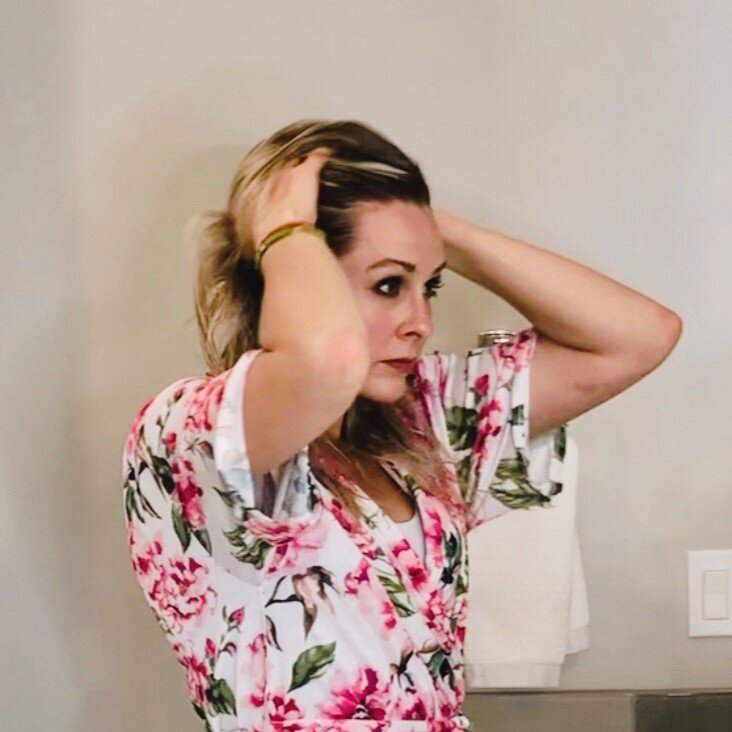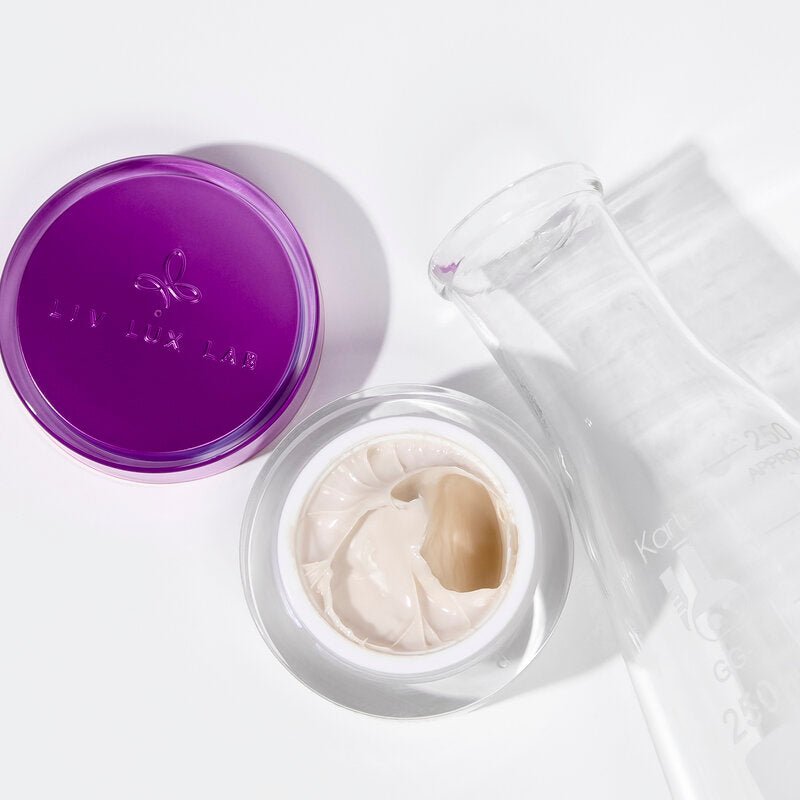
From the trending TikTok videos on styling techniques + hair damage prevention tips, there is no shortage of hair-related myths floating around on the internet. You've probably heard them all - "cutting your hair will make it grow faster" or "don't use conditioner if you have fine or oily hair". Don't be fooled, although some of these hair care tips seem logical, these myths have been around for so long that we've accepted them as facts! The biggest problem with accepting these myths is that these untruths can lead you to take actions that can seriously damage your hair! In this article, we are separating fact from fiction since there's a lot of myths when it comes to getting the healthiest hair we've ever dreamed of!
Myth #1 One Product Works For All Types of Hair Damage

Many hair products are formulated for hair damage, however one product is not able to address hair problems arising from different sources of damage that leads to breakage, dullness, brittleness, dryness, tangling, fizziness, and a rough, straw-like texture to the hair. We designed SAVE ME FROM to fix this hair damage at the source to get rid of theses symptoms of hair damage - like a medicine for your hair - rather than just masking the damage for temporary shine, strength, hydration, and smoothness.
Each Save Me From treatment has multiple active ingredients to address a hair damage concern. We have identified six major sources of hair damage to combat. Five of these sources are due to what we do to our hair, and the sixth is due simply to a process we all go through. When keratin is restructured, the 18 MEA hydrolipidic film disappears on the hair, and the cuticle scales raise or fall off when hair is damaged and breaking off.
Let's start with the least damaging sources to the most damaging sources:
-
Pollution Damage - Don't think that your hair gets off scott free when it comes to free radicals. Your hair was not designed to be able to handle all of the toxic things in the air in our world today! These toxic free radicals in the air break down and damage your hair from cortex to cuticle and prevent your hair from feeling its best.
- Product Damage - Products containing silicones, sulfates, harsh salts, and sticky substances to manipulate the look of your hair leave residue and prevent your hair from getting what it needs. At first, silicone based products feel nice, but do not actually do much good for your hair in the long run.
- Sun + Sweat Damage - Sun UV rays cause the natural bonds in your hair to break, and your cell membrane to lose hydration. Sweat causes glycation on the hair shaft, which causes the cuticle to fuse, making it tangly, brittle, and dull.
- Age - Something we cannot avoid, age, is one of the hardest things for people to encounter when it comes to their hair. Because of prolonged exposure to damage, as well as hormonal changes and lack of nutrition absorption, aging hair gets gray, thin, wiry, and prone to breakage.
- Thermal Damage - Using hot tools dries out the hair, breaks the keratin protein in the cortex, and causes blistering and buckling of the cuticle on the outside of the hair shaft. This damage only causes further damage and exposure to other harmful thinks like UV exposure and pollution damage.
- Chemical Damage - The queen of all bad things to do to your hair: bleach, dye, relaxant, and perms are examples of chemical damage and can cause large amounts of damage, breakage, and broken bonds in the hair shaft.
Myth #2 You Need A Separate Product to Treat the Scalp

When it comes to having healthy scalp and hair, the products you use are very important. Just like we mentioned in the myth above, there is no one product that fits all when it comes to healing + repairing hair damage at the source. Apply the same thinking to your hair and scalp regimen that you do to your skincare routine, focusing on several ingredients that work synergistically that benefit not only the hair but also the scalp!
Caring for the scalp is essential since our hair grows from the scalp and determines the health and condition of the new hair growing! Save Me From takes a scalp first approach, developed by experts in skincare creating a complex 5x more potent in plant nutrients including polyphenols, niacin, vitamin A + B vitamins + formulated alongside caffeine to feed the scalp + help stimulate the hair follicles.
For a healthy hair care routine, cleanse and condition the scalp + hair frequently with a shampoo and conditioner suitable for your hair texture to remove buildup + debris on the scalp and hair. We also suggest applying a weekly intensive Save Me From overnight treatment to your hair to improve hair strength, shine and elasticity. Once weekly, exfoliate your scalp with an exfoliating hair treatment. Pro tip: add a teaspoon of sugar to Save Me From Product Overload to gently lift away dead skin cells and improve suppleness!
Myth #3 Hair Can't Be Repaired Since It's Dead

Although the hair is technically dead, the scalp is a viable living tissue like our skin, and if there are imbalances with the scalp it can also cause problems with the hair since the hair grows out of the scalp. One common myth is that when hair is damaged, it is ultimately permanent and irreversible. Hair's composition is incredibly helpful in understanding how it becomes damaged and how it can be fixed.
1. Cortex
The cortex of the hair is where your keratin lives. Keratin is becoming an increasingly popular word when it comes to hair damage and hair health. The keratin protein lives in your cortex with other lipids. Keratin is a type of protein that can be manipulated by chemicals such as for a perm or relaxant to either curl the hair or straighten it. Keratin treatments were invented to repair the keratin damage you may have, but may actually be damaging to your hair. When you bleach or dye your hair, you are inserting certain chemicals into the cortex to manipulate the melanin that exists there, as well.
2. Cell Membrane Complex
The cell membrane complex is where your hair hydration lives. It is composed of lipids that are "sticky" and keep the cortex and the cuticle together. When the cell membrane complex is exposed, you lose hydration and expose the cortex to cause further damage as it protects that important innermost layer of the hair shaft. We will talk more later about what damage to the cell membrane complex looks like, but just assume that it is very important to the health of your hair shaft.

3. Cuticle
The cuticle is made up of hard scales that lay down to protect the rest of the hair shaft. These scales can be moved depending on the damage and cause several of the symptoms of hair damage. Most hair care products are designed to manipulate, coat, replace, or otherwise improve the look of the cuticle of the hair. While the cuticle is made up of dead cells, their attachment to the cell membrane complex and their ability to lay down and be flexible is very important to giving you beautiful hair.
4. Medulla
The medulla is in the very center of the cuticle and may not exist in all hair types. It is particularly prevalent in course, darker hair and gray hair. It contains a less organized mixture of air and cortex cells. It doesn't serve any known purpose and may even contribute to an uneven distribution of strength over the hair shaft. Often products do not have anything to do with the medulla because of its lack of consistency in types of hair and because keratin and bonds in the hair exist in the cortex, cell membrane complex, and cuticle.
Frizzy Hair
Frizzy hair is often described by people as something they cannot control. While it might be difficult to control, understanding why hair gets frizzy is incredibly helpful for managing it. Frizz is caused by a swelling within the hair shaft due to a damaged cuticle and too much moisture entering into the cell membrane complex. Thus, the trick is managing the amount of moisture that enters into the cell membrane complex.
Tangly Hair
Tangled hair is also a sign of damage, something I would guess you didn't know. Tangly hair is a result of the cuticle of the hair shaft lifting up and then "catching" on other lifted cuticles. Now, imagine what happens when you comb through to detangle those stuck cuticles? Yep, more damage and more tangles. Keeping the cuticle healthy and laid down is essential to keeping the rest of the hair healthy.
Dull Hair
Ever wondered if you were bound to just have to endure "mousy" looking hair the rest of your life? Well, now that you know that dullness is a symptom of hair damage you can fix it and get that shine you miss! Dull hair is similar to tangly hair - when the cuticle is lifted up and haphazardly pointing in any direction, the shine of the hair decreases. Thus, when you take care to lay the cuticle down on the shaft, you are going to bring back your natural shine.
Dry Hair
One of the most common complaints about hair is how dry it gets. Many people want to know- how can I fix dry hair? Dry hair is a symptom of a dry cell membrane complex. When the cell membrane complex is exposed and hydration is lost, this is because of damaged cuticle and damaged lipids. Hydrating your hair means more than just applying a conditioner! It means repairing lipids, reinserting hydration, and locking it all in with some better habits and better products.
Hair Breakage
Another common complaint is hair breakage. In fact, many people think that they are losing hair when they are actually experiencing hair breakage. Breakage occurs when the cortex of the hair is exposed and the keratin is broken or weakened. Hair loss is often just hair breakage because the hair breaks most often in the mid-shaft (usually where you are using strong rubber bands in your hair for those buns and ponytails). Hair breakage can be very hard to fix, but with the right ingredients you can pull it off.
Brittle Hair and Straw-like Hair
Brittle, straw-like hair is often due to UV exposure, glycation, and damaging chemicals in waters like chlorine and hard water. When you sweat, your hair undergoes a process called glycation where the cuticle layers will fuse together, making it stiff and much more prone to breakage. While you want your cuticles to lay down on the hair shaft, you also want them to be flexible enough to give your hair bounce and fullness.
Myth #4 Wash With Cold Water for Shine + Tighten the Cuticle

You may have heard to close the cuticle of the hair quickly by rinsing your hair in cold water, however the only way to truly add shine is to smooth the outer hair cuticle - and neither cold or hot water can do this! Since the cuticle is composed of tightly packed scales that overlap like tiles on a roof, a healthy cuticle lies flat and reflects light very well, creating shine whereas a damaged hair cuticle is raised, making the hair look dull.
To smooth the hair cuticle, use a post-hair-wash treatment to help tighten the cuticle, like Save Me From Pollution Assault, which uses a blend of polysaccharides from green tea and xylitol in combination with panthenol (vitamin B5) and chia seed to prevent pollution particles from sticking to your hair, and tightens + seals the cuticle to help keep hair protected, soft, smooth and healthy!
Myth #5 Trimming Hair Makes It Grow Faster

Although scheduling a trim every four to six weeks helps ensure minimal split ends, this doesn't affect hair growth from the roots. Getting the ends of the hair trimmed on a regular basis prevents split ends from traveling up the hair shaft, making hair look fuller for healthier looking. If you're looking to maintain the length of your hair, ask your stylist for a light trim, also known as "dusting" to improve the texture and elasticity of the hair, while preventing split ends from growing up the hair shaft.



